NOVEMBER 15, 2022 : We woke up to a thunderstorm. Weather reports say we will be having lots of rainy weather over the next two weeks. The perils of traveling in November.
We had tickets for the 10:00 ferry to take us from Corfu back to the mainland. Our AirBnb was located in a pedestrian zone, but if we translated correctly the Greek sign, we were allowed to bring a car into the area in the early morning. By 8:30 (considered early in Greece), we were ready to leave. Mark drove down our cobblestone street – we managed to load the car without getting too wet and without a traffic violation. Since it was early, we were the very first ones to get on the ferry, and we then spent an hour sitting at a table on deck, working on our computers.
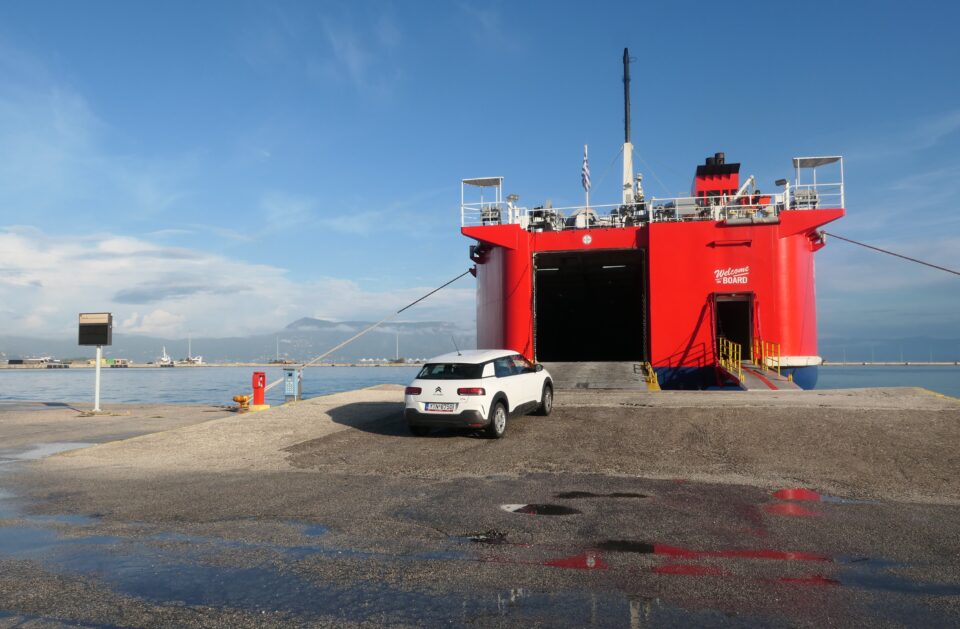
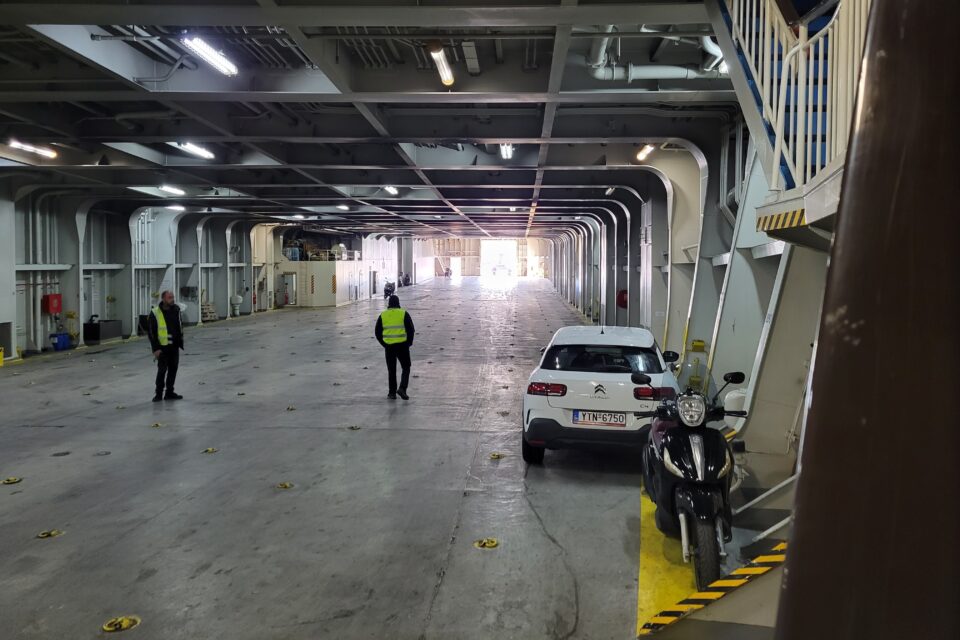
By the time the ferry left Corfu, the sunshine had returned. It was another enjoyable ride, with the seagulls once again accompanying the ferry as we approach the port in Igoumenitsa.
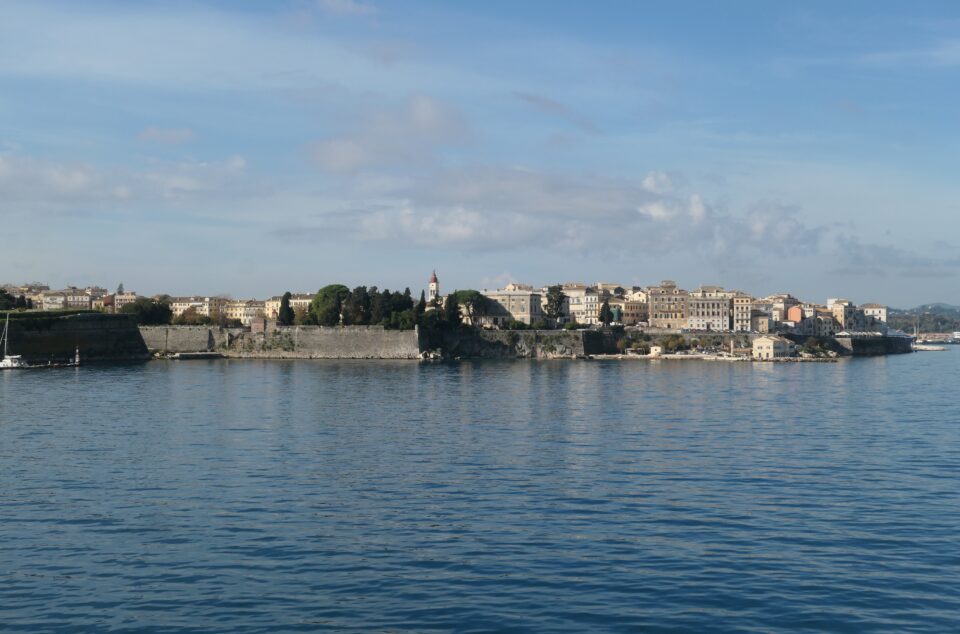

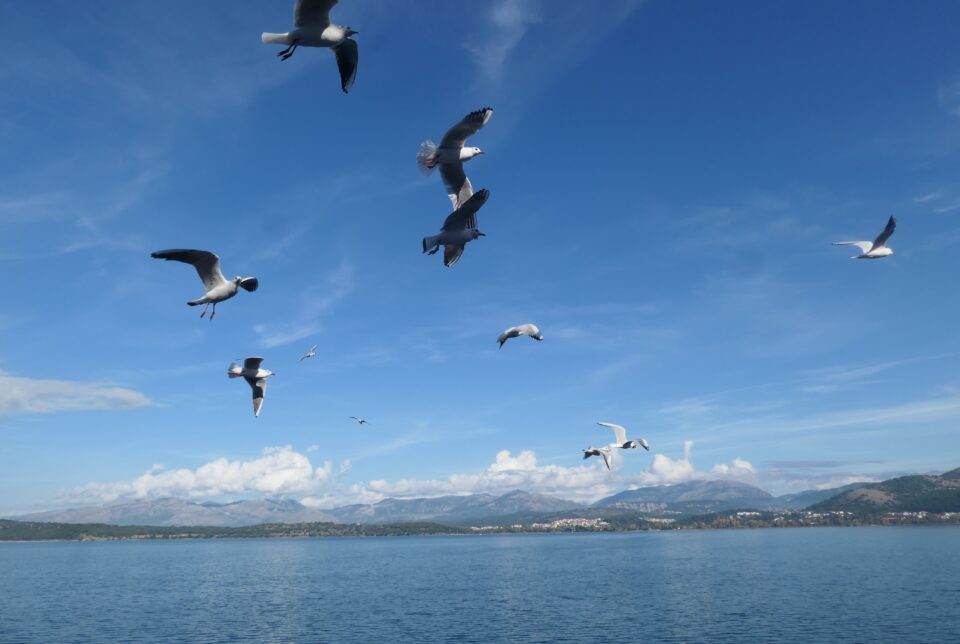
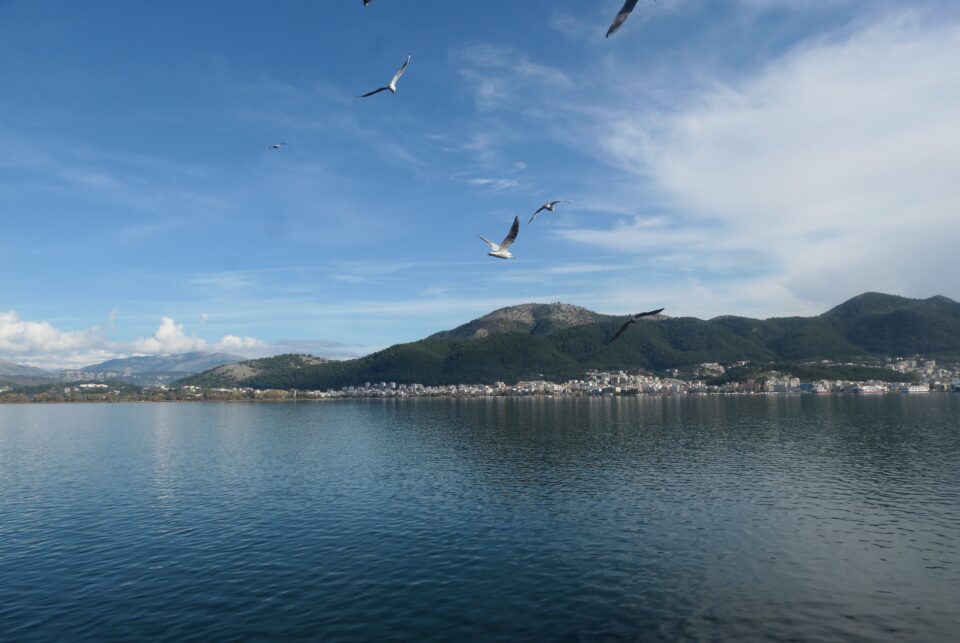
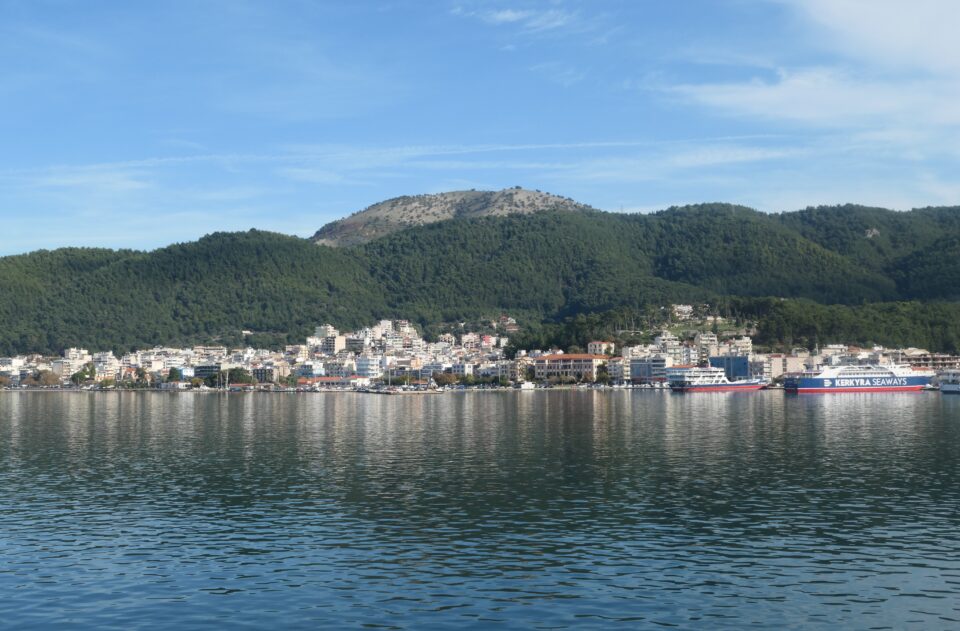
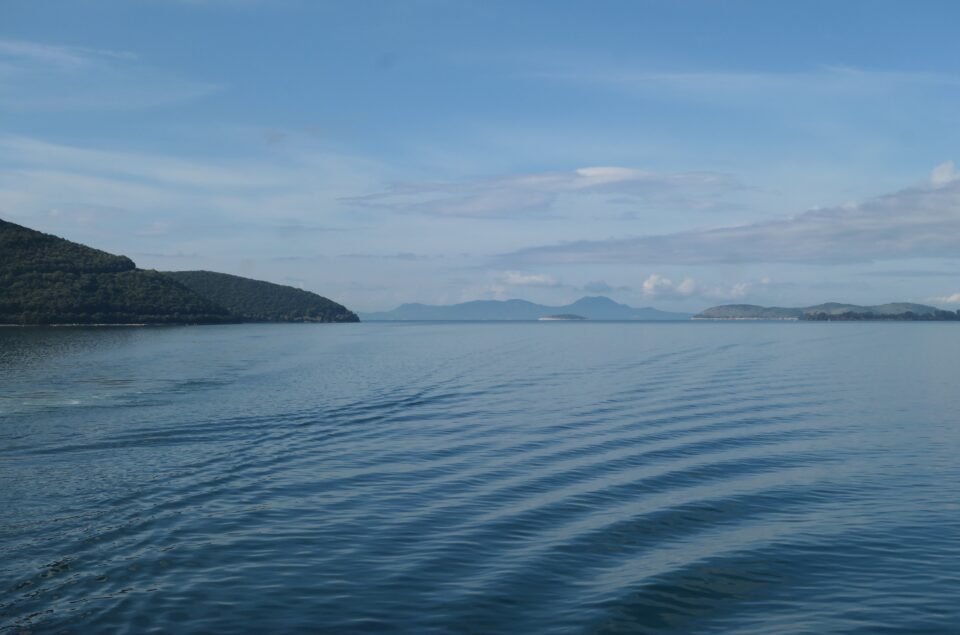
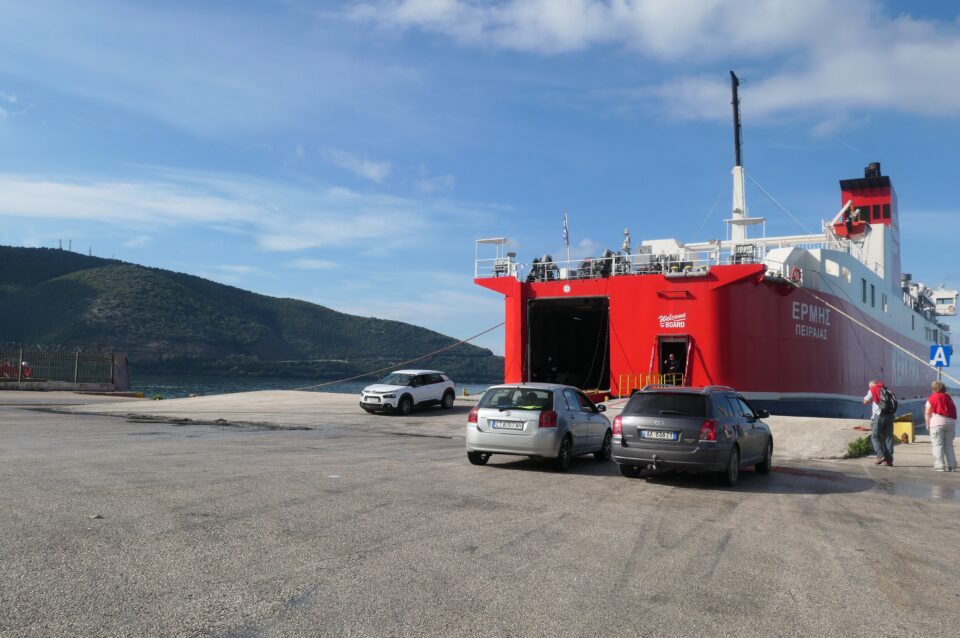
Our destination was Arta, a two hour drive away. Just as we started driving, the rain returned, and got stronger and stronger as we got closer to Arta.
To reach Arta, we drove along the western coast of Greece for most of the trip, and then the last ½ hour, drove inland in a mountain valley. Along the coast, every once in a while, the vegetation would open up and we could then see the coastline and the sea shimmering below.
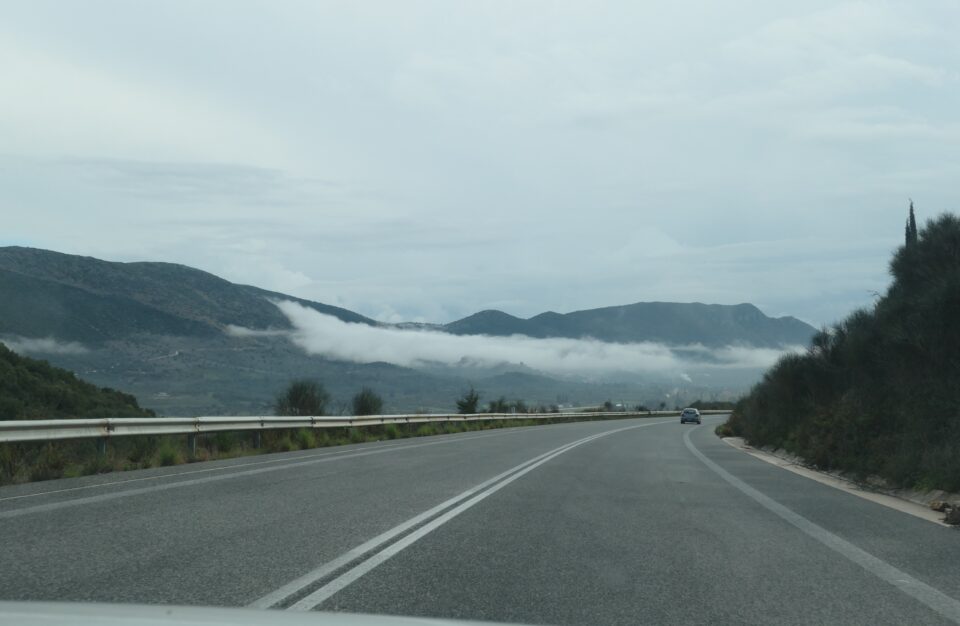
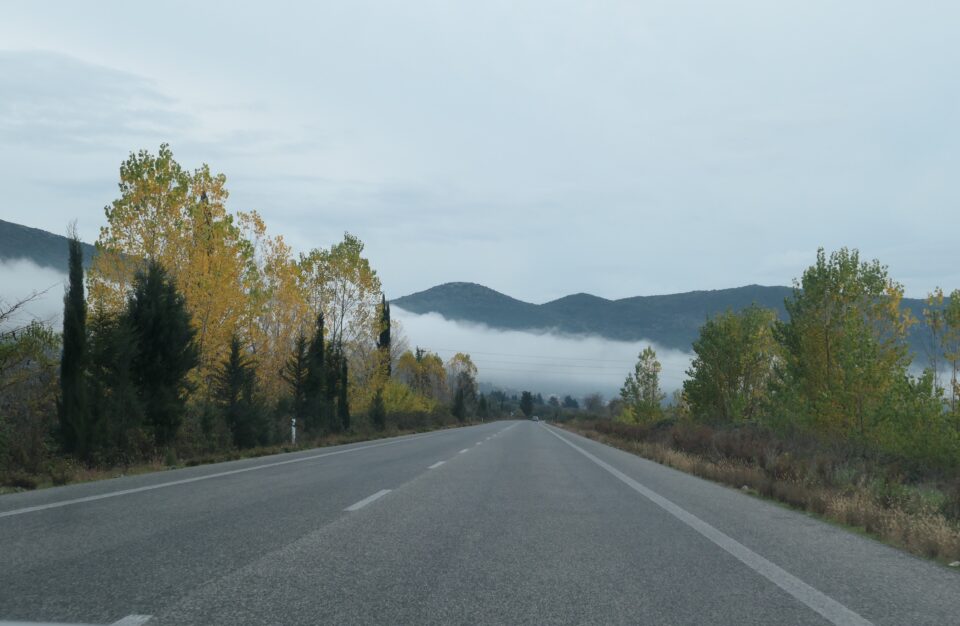
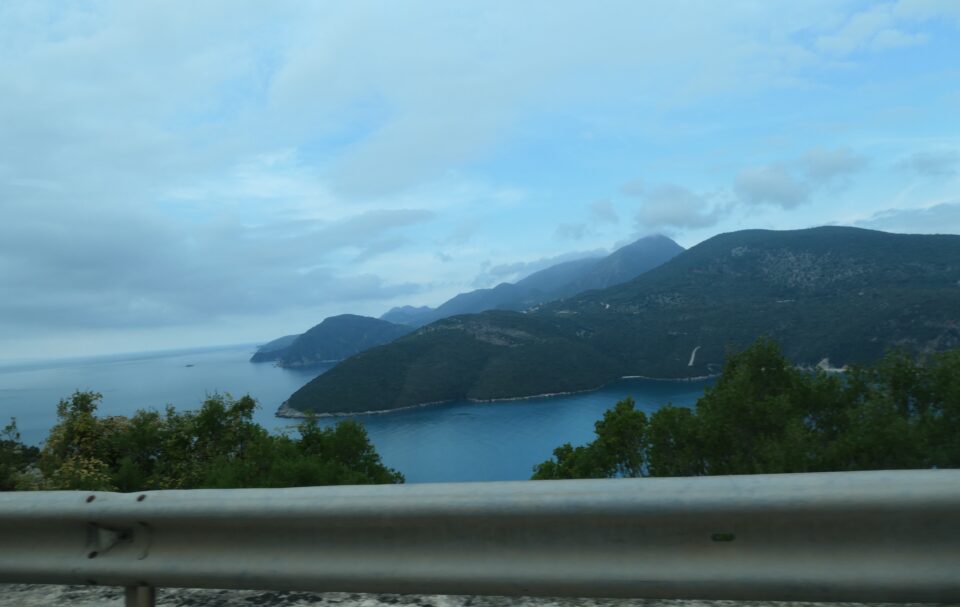
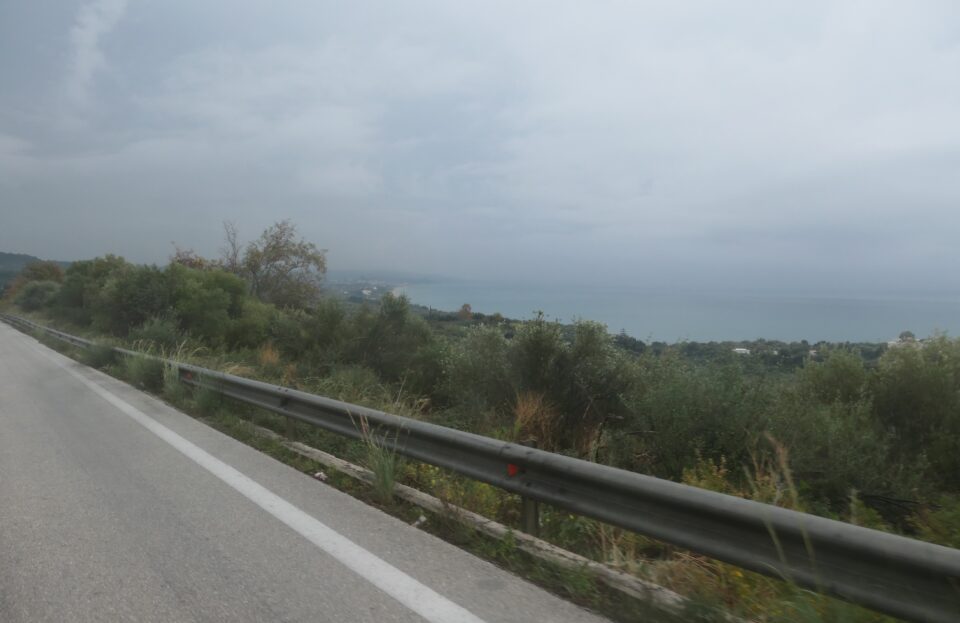
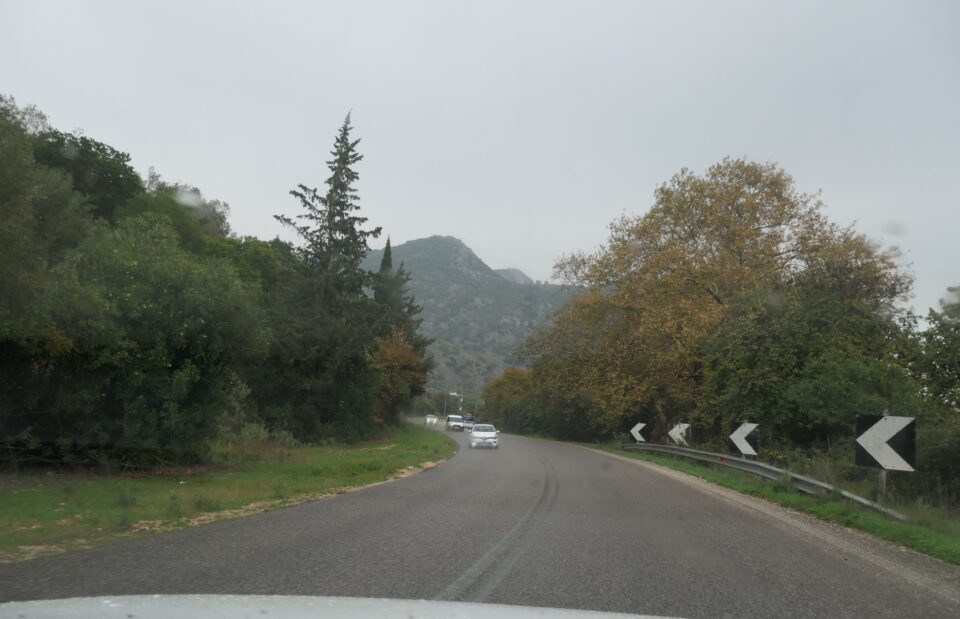
The last several kilometers of the drive were through an area of light industry. Arta is a very spread out city, with the center along the banks of the Arachthos river and most of the houses, up on the adjacent hills.
The Jewish Community of Arta was one of the oldest in Greece. Documents show that there were 100 Jewish families living in Arta by the year 1173. These were Romaniote Jews – a Jewish, Greek-speaking community. They built a synagogue and cemetery. In the late 15th century, they were joined by Spanish and Italian Jews, expelled from their own countries. They formed a separate Jewish community in Arta, with their own synagogue.
At the outbreak of World War II there were 384 Jews living in Arta. For three years (between 1940-1943) under Italian occupation, community life continued almost normally. In October 1943, when the Germans took control, the restrictions for the Jews began. The local bishop, Metropolitan Bishop of Arta Spyridon Ginakas petitioned the Germans to spare the town’s Jews. After the Germans refused his request, he advised the Jews to escape to the surrounding villages. Unfortunately, very few listened and only 35 Jews managed to escape from the town. On 22nd March, 1944 the remaining 352 were arrested and transported to Auschwitz, where only 25 survived.
After the war, 60 members of the Jewish community returned to Arta. They later left the city to go to Athens, Israel or the USA. In 1959, the community was officially dissolved. Both synagogues were eventually demolished.
Once we reached Arta, we drove up a hill, looking for the Jewish cemetery. We arrived at the GPS coordinates that we have, and we were in front of a large military training ground – complete with soldiers standing guard (no photos taken). On re-reading the information we had about the cemetery, we were in the right place – it was once located where the training ground now is, but there is nothing left to see.
We made our way back down the hill, cursing Google maps for taking us down very narrow, steep lanes instead of the main roads. Our next stop, and the reason we drove to Arta, was to visit the Holocaust Memorial. We found it beautifully situated just outside the walls of the old Arta castle. This monument was erected in 2004. Not much information can be found on the internet about this memorial. I discovered it from a news article in 2017, when it was vandalized. Written only in Greek, the monument loosely translated says In memory of her 324 Greek Jews that were exterminated in the Nazi concentration camps.
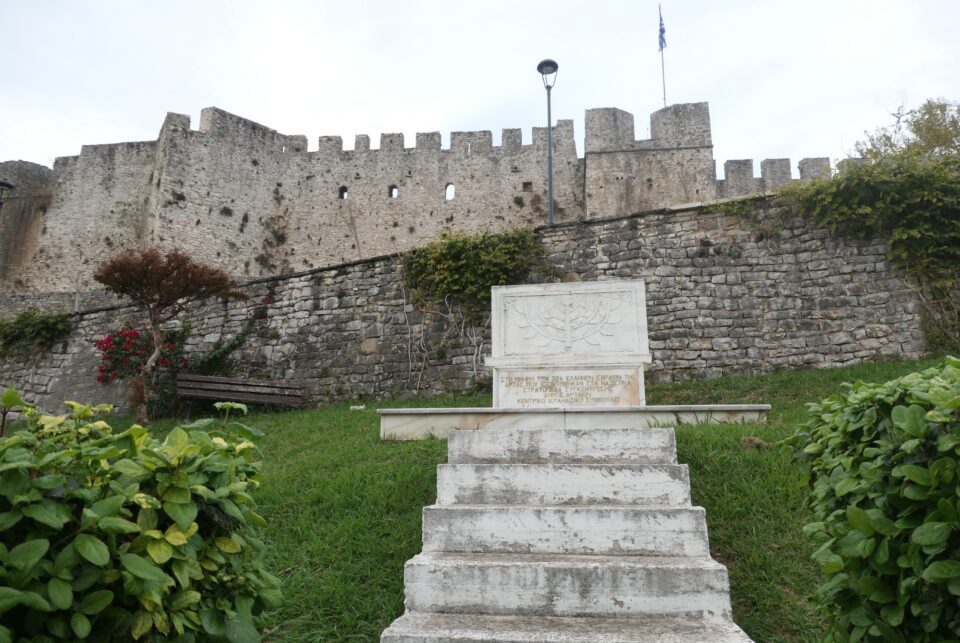
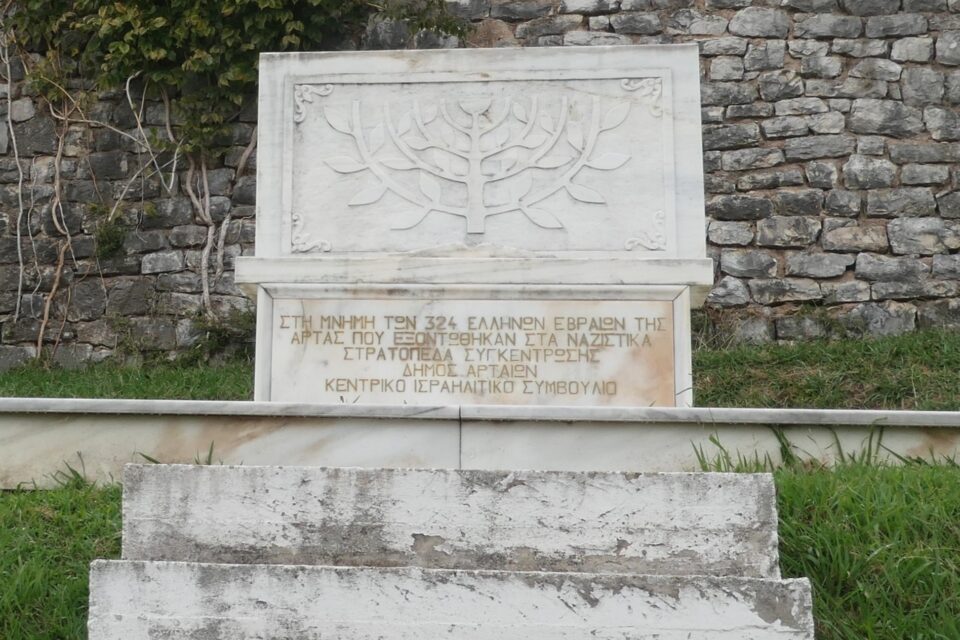
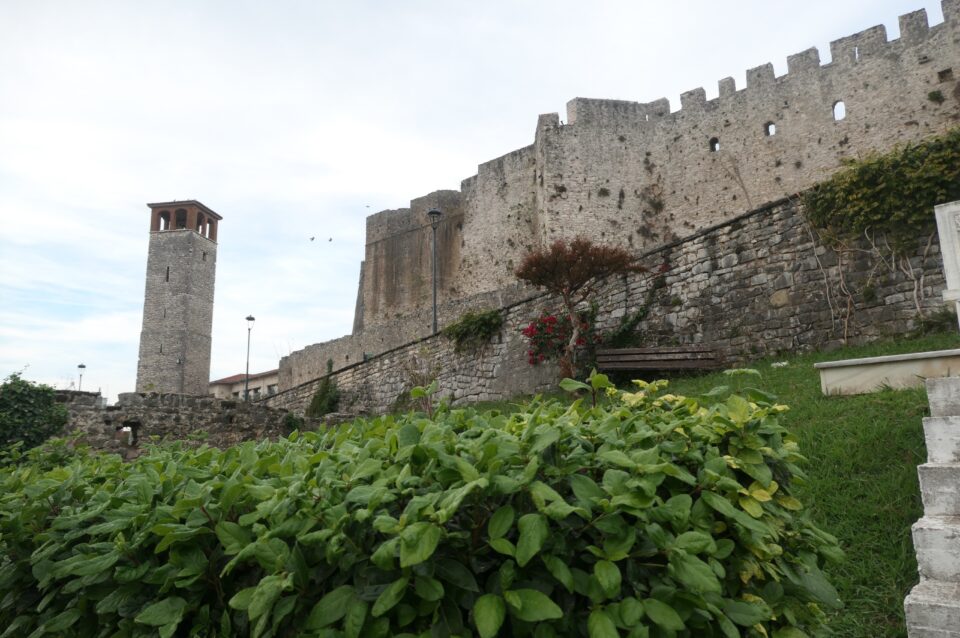
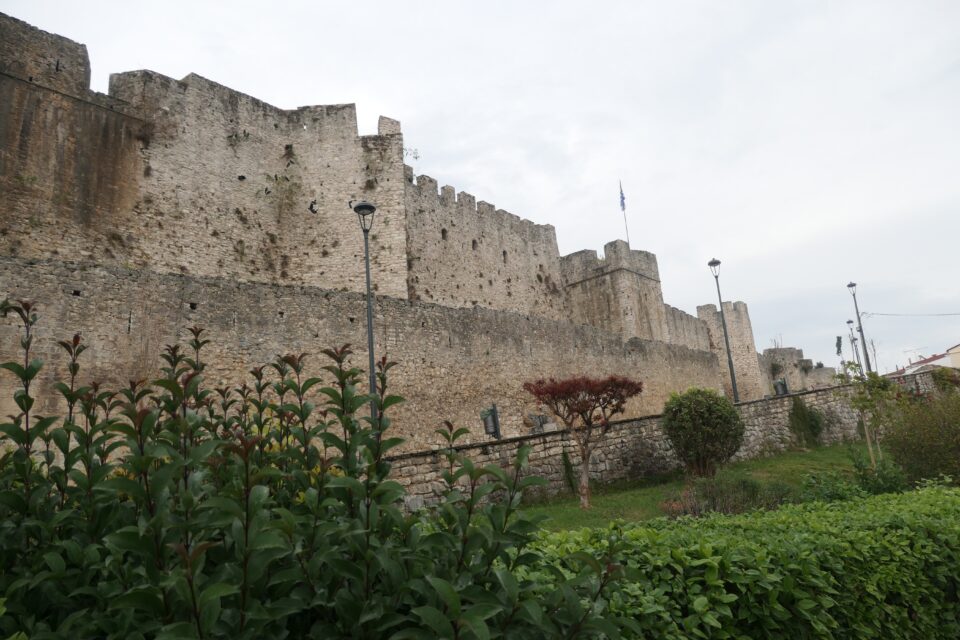

Arta is so off-the-beaten-path for tourists, that I did not find an AirBnb to rent, and this was our first night this trip in a hotel room. We checked in to the Cronos hotel and were given a small room that seemed to be frozen in time from the 80s. It did however, like in most Greek apartments, have a narrow balcony to enjoy.
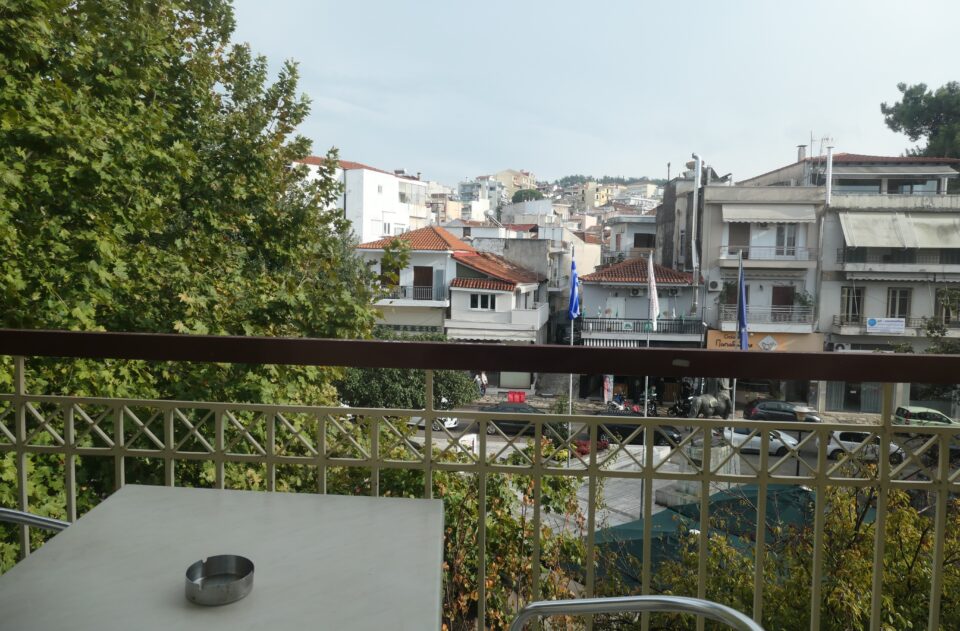
One of the tourist sites to see in Arta is a historical bridge that crosses the Arachthos river. The bridge seen today was constructed in the early 1600s. We walked through town to reach the bridge on large busy streets, full of traffic. The sunshine had returned. The arched stone bridge was spectacular. With a length of 142 meters, and seven arches, it was much larger than any stone bridge we had seen in the Zagori. The still waters below provided a mirror image of the autumn-colored trees along the riverbanks. Really beautiful.
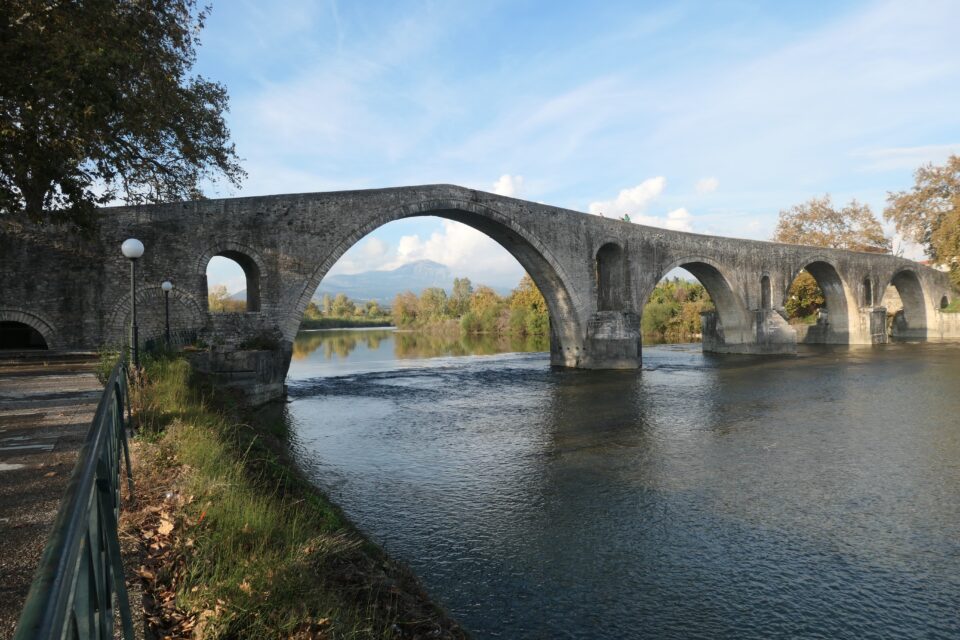
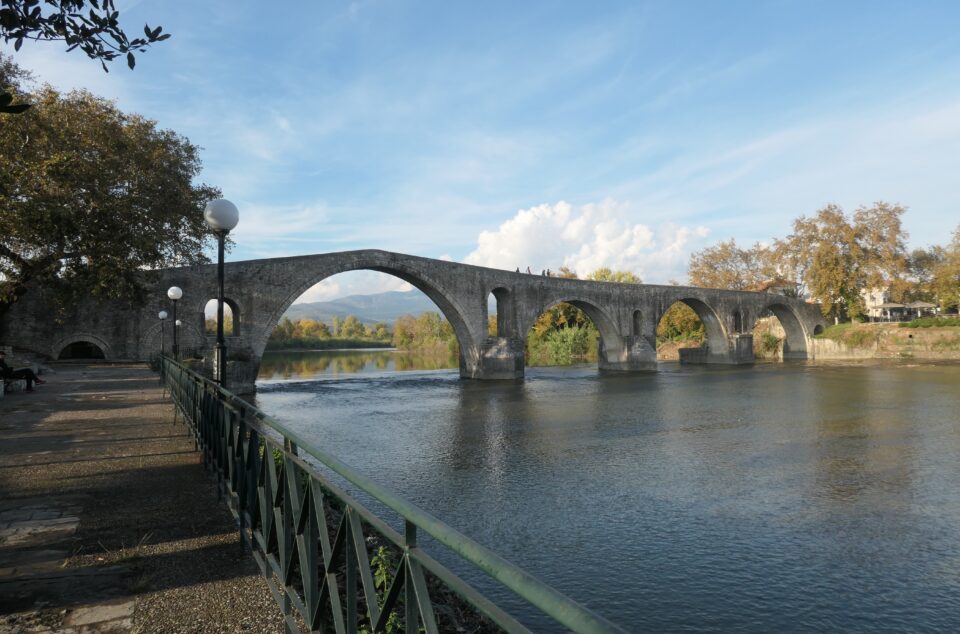
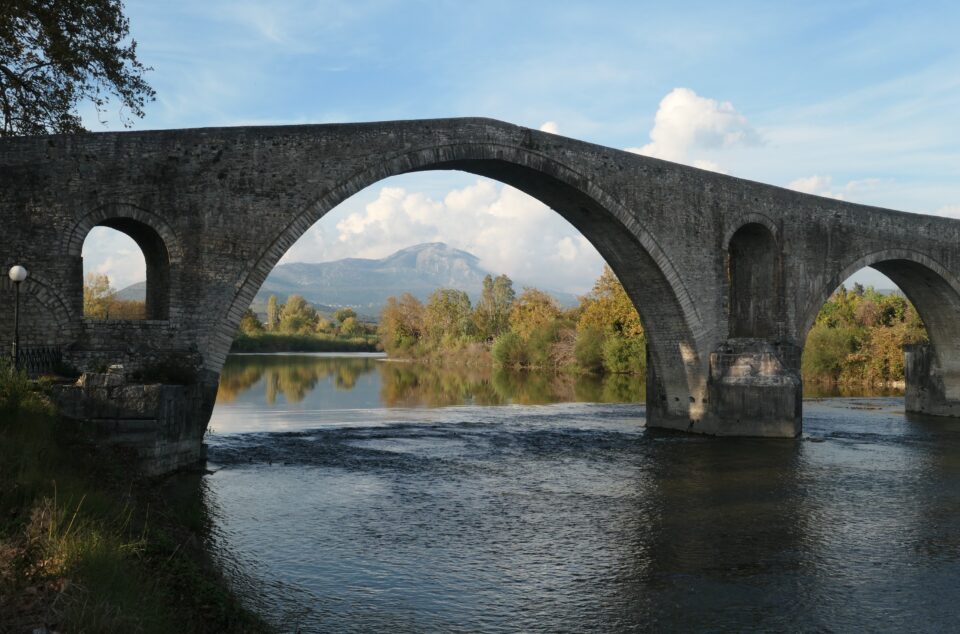
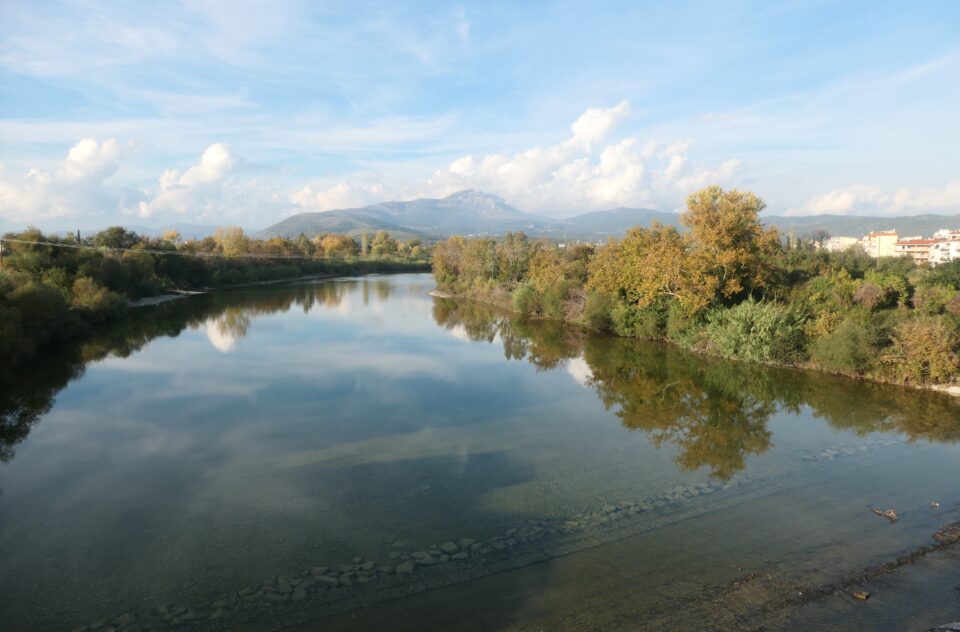
On the way back to the hotel, we did some grocery shopping and called it a day. Today, and the next three days are days with lots of driving and little to see – we have a long way to travel to reach Athens for Shabbat.
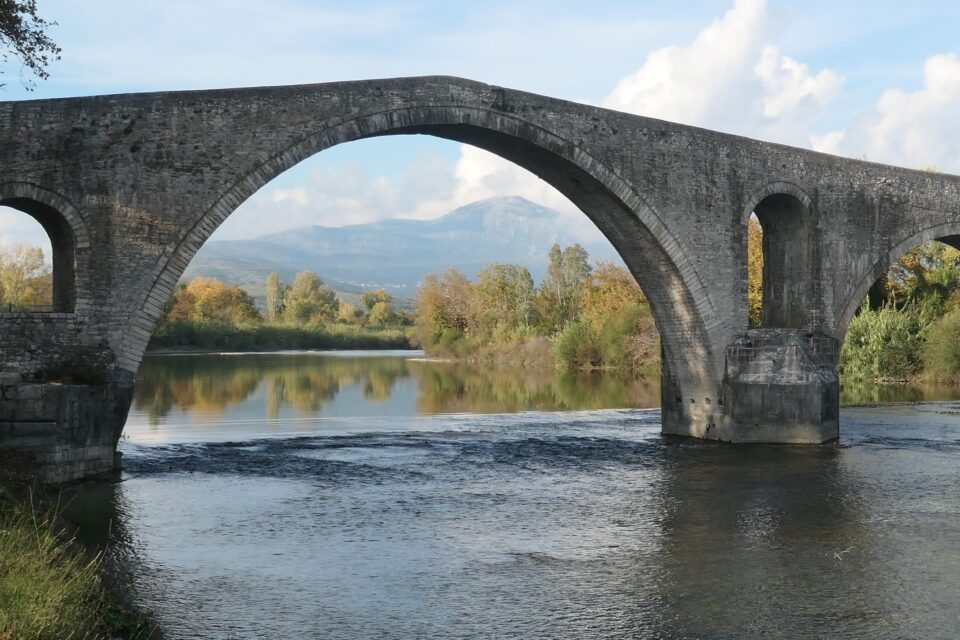
Do you know anything about the maintenance of these old bridges?
There is no reason for it to be surprising, but we are so used to all the stories of how brutal the Nazis were in systematically rounding up all the Jews in Eastern Europe and sending them to their death, that to read throughout all your blogs of how the Nazis went into every small town in Greece and sent the Jews off to Auschwitz/Birkenau–and how few, if any, survived, is just a reminder of the obsessive hatred they had for the Jews.
Drive safely in the rain!!!